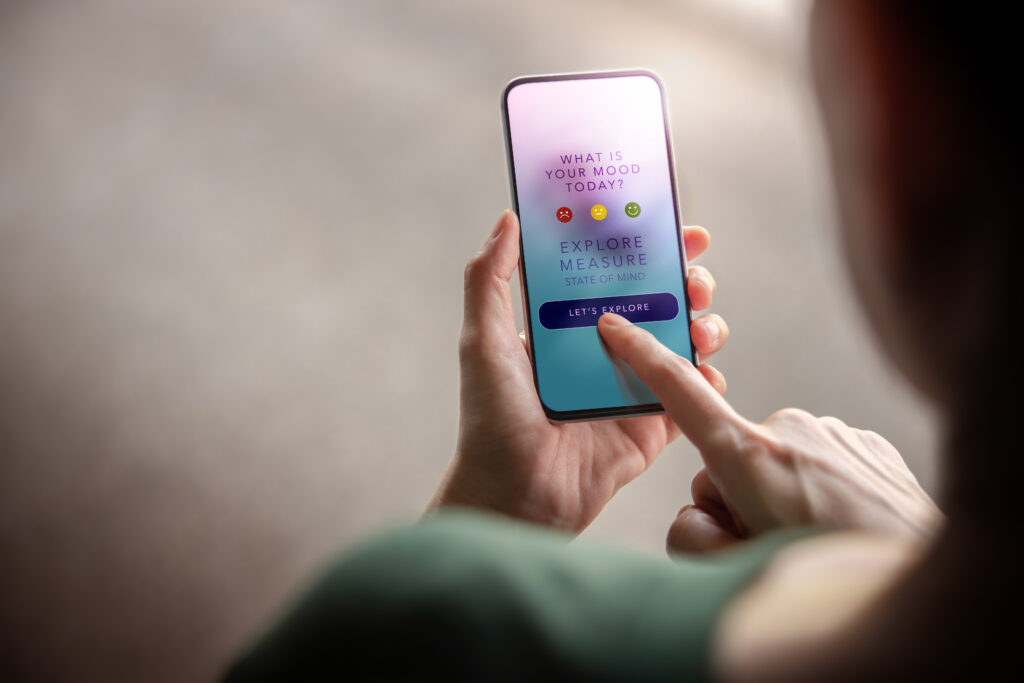

Columns/Blogs
HR Technology
Mental Health
Some resiliency mental health apps are doomed to fail: Here’s why
July 13, 2023
By
Bill Howatt
 A worker checks out a mental health app on a smartphone. Photo: Adobe Stock
A worker checks out a mental health app on a smartphone. Photo: Adobe Stock Resilience has become a popular term in workplace mental health as a pathway to creating positive emotions that promote mental health. It is often considered a success trait for coping and bouncing back from life challenges.
With the growing cost of mental health, more employers are looking for solutions that focus on preventing mental illness — the logic being if resiliency is a desirable trait, it makes sense to provide employees with resiliency training.
One low-cost approach some employers are considering to facilitate resiliency training is using mental health apps. The cost per FTE for access to a 12-month program is economical, and the solution is highly scalable without straining operations. Deloitte recently reported around 20,000 mental health apps and suggested two of the most popular are Calm and Headspace.
However, the value is worth questioning. One recent study examining mental health app use in more extensive real-world settings reported low retention rates, with only 3.9% of participants using them for more than 15 days.
Tips for making better buying decisions
The adherence numbers proof one thing many of these apps are not being perceived as being valuebale by the end user. Regardless, of the above stat, resiliency mental health apps when done through the right lens can drive up adherence as well have a meaningful role in preventing mental harm and promoting mental health in the workplace context.
There are lessons from diversity and inclusion, behavioural change, and motivation. Psychological health and safety research can help employers make better decisions and avoid buying apps with more risk of failing to have meaningful adherence levels in a multicultural workplace.
Lack of understanding of what facilitates resiliency
Most mental health apps on the market are created through a euro centrist lens that puts accountability for resiliency on the person. This logic is flawed for employers who want to create diversity and inclusion. It perpetuates oppression and does nothing to facilitate an anti-racism agenda. Workers’ resiliency in the workplace is impacted by their knowledge, skills, and habits. Equally important, and perhaps more important in some cultures, is workers’ resiliency levels are dramatically impacted by their environmental experiences inside and outside the workplace (e.g., social and political policies, financial health). It is too simplistic to think giving employees a resiliency app will create a resilient workforce. Some populations live daily in chronic adversity and a lack of resources that have nothing to do with their potential to be resilient. The tip here is to expand the definition of resiliency to include learning, system, culture, society, and community, which all play a role in creating resilient workplaces.
Be aware of the elements employers can directly influence regarding resiliency
Seven elements in the workplace can be drains or charges:
- mental fitness practices that facilitate knowledge and skills (e.g., emotional regulation, positive thinking), which are trainable habits that promote resiliency and mental health
- measures employees perceive as psychosocial factors (e.g., work demand) and hazards (e.g., fatigue levels)
- authentic connections (e.g., sense of feeling welcomed, belong and included) that protect from isolation and loneliness
- support for challenging workplace experiences such as failure and exposure to trauma
- physical health without proper sleep, hydration, oxygen, nutrition, and healthy lifestyle choices
- attitude and mindset about showing up and interacting with peers, leaders, and customers
- feedback from groups that promote continuous improvement. When selecting a mental health app, be clear on what elements the app facilitates and how (i.e., individual versus system approach).
No two-way accountability = no adherence, lost opportunity
Workplace mental health success depends on employers and employees working together for a defined outcome, reducing mental harm, and promoting mental health. Mental health apps can promote two-way accountability by facilitating programs defining employees’ roles (e.g., curriculum, tools to support habit development).
Apps clarify what employers accept accountability for, including onboarding, encouraging employees through incentives, and monitoring progress.
The apps provide employees time to engage in learning in the workplace, employer feedback on what psychosocial factors drain and charge employees, and what programs support employees’ mental health.
Be clear on driving adherence
Mental health prevention information is useless unless it encourages and promotes habits that protect and promote mental health. External levers that drive adherence include rewards, incentives, recognition, and accountability tactics (e.g., accountability partner).
One research report found internal levers that drive adherence to mental health apps include:
- program personalization
- user-friendly design leveraging reminders and push notifications
- facilitating help-seeking behaviour when personal support is needed (e.g., employee family assistance program, psychologist).
Adherence levels are driven by leveraging external and internal levers. Directors can encourage employers to ensure workers get proper training, and leaders promote psychologically safe and inclusive workplaces.
For example, setting the goal for ESG reporting at 75% of the workforce completing the assigned mental health app program. This goal only happens when senior leadership is all in, understands the business case and value, acts on data collected, and manages the employee experience as they would any other critical success indicator like quality or safety.
 Dr. Bill Howatt is the Ottawa-based president of Howatt HR Consulting.
Dr. Bill Howatt is the Ottawa-based president of Howatt HR Consulting.
Print this page